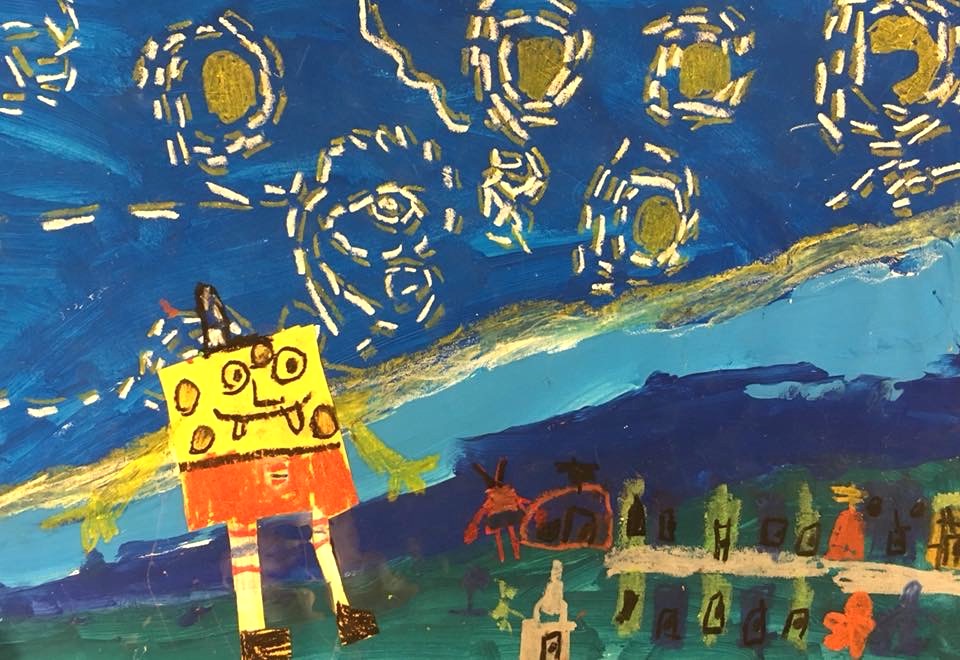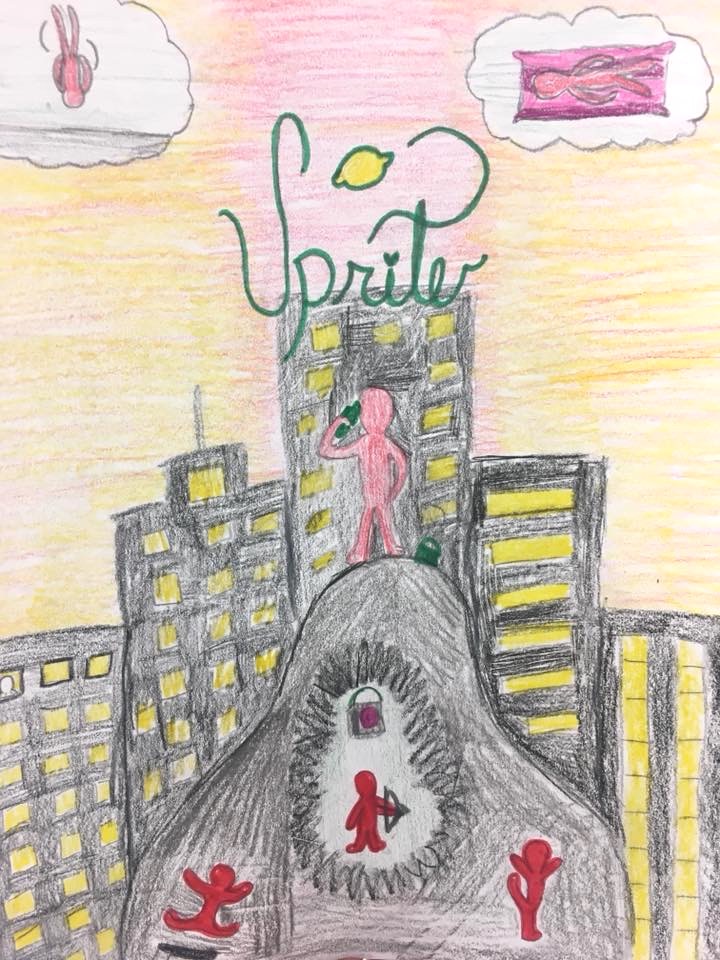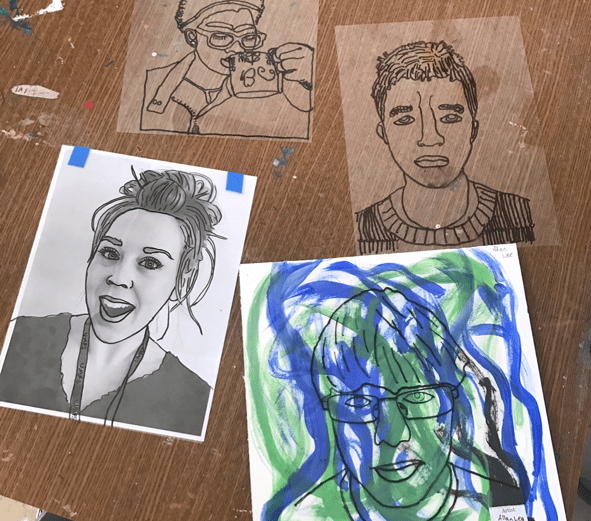What is Visual Culture?
In Kerry Freedman’s book, Teaching Visual Culture: Curriculum, Aesthetics, and the Social Life of Art, she explains that visual culture is everywhere. We can’t escape it, and it applies to everyone. We are bombarded with images on television, in magazines, as we scroll through our phones, and walk through shopping centers. Visual culture asks us to be critical of these images and to question why and how we are seeing them. Having an understanding of visual culture can better our knowledge of what we see, how we interpret what we see, and how others perceive what they see.
Elementary Students Have a Unique Perspective
Elementary students have their own unique visual culture. They see tons of images specifically designed and targeted toward them. Their clothes, backpacks, and shoes feature characters and designs that would not necessarily be marketed for older demographics. They see cartoons and television programming that shapes and influences their understanding of the world around them. Their cell phones are loaded with games and applications with images marketed to encourage them to buy—or ask their parent to buy—digital and physical products.

While we are all surrounded by images, each of us has our own perspective of specific images we come into contact with daily. Elementary students are no different.
Embracing and Encouraging Visual Culture
Elementary students may not think to be critical of these images or even recognize just how many they see in a day. As art teachers, we can shine a light on the visual culture in our students’ lives, and encourage them to explore these images in their own artwork. Just as you may have students discuss a work of art, you can have similar conversations about other images.
Bringing It Into The Classroom
Ask students about their favorite shoe brand. Pull up a still image from an advertisement for that particular brand. Ask students to describe what they see. Explain they are only allowed to describe actual facts and things they know for sure just by looking at the image. They are not to make any guesses or interpretations at this point.
Many of your students may find this process challenging at first. Some may be quick to make interpretations based on prior knowledge, without taking time to look and describe what they actually see in the image. Encourage your students to separate what they see and what they know to become more critical of their visual culture.
Embrace your students’ visual culture by allowing them to incorporate their own interests and imagery in their artwork. By doing so, students may become more invested in the work they are creating. You will also gain insight into their interests and unique perspective.
Parody Projects
Parody projects are a great way to have students incorporate their own visual culture into an art project. Choose a famous artwork and ask students to alter the image by including a symbol or character from their visual culture. Each year you could switch this assignment up by choosing a different artwork to parody. You can also find lots of examples online of parodies of famous artworks likeThe Starry Night, Mona Lisa, or A Sunday Afternoon on the Island of La Grande Jatte.

These famous artworks have been altered to include new elements or characters from visual culture. Encourage your students to do the same with their own unique ideas. Edvard Munch’s The Scream can be recreated with an emoji. Thomas Gainsborough’s The Blue Boy can be recreated with Sesame Street’s Grover. Your students will be able to easily apply their own characters, and some you may not recognize, but in opening up the project, you will be able to share in your students’ visual culture.
Identity Projects
Identity projects are another great way to ask students to incorporate their visual culture into their artwork. Simply asking students to fill their portrait background with images that represent them will naturally showcase their visual culture. Students are bound to add imagery of their cell phone, and favorite applications, YouTube channels, television programs, and more.

Students may start to make connections and see how the artwork of their peers have similar imagery. This is an excellent opportunity for you to point out how they share a similar visual culture because of their proximity in age and/or location. The images found in their visual culture are marketed toward them specifically. Ask them why they think that is. Ask them if they think you or their parents see the same imagery in their daily life. Ask them why or why not. These conversations can be a great way to get students talking about how they see the world and help them start analyzing it more closely.
Symbolism Projects
Symbolism is a great way to connect your art projects with visual culture. Students see symbols a lot more than they may think. Begin by asking students to identify any symbols they see in the classroom or their school. They may look around for a minute or two, but will probably be able to find a few pretty easily. Symbols like restroom, recycling, stairs, etc. are easy to identify in public places.
Now, ask them to think of other symbols they see throughout the day. Ask them to keep a journal of symbols they see from the moment they leave class until they have your class again. They will be amazed at the number and variety of symbols they encounter. Once they have a clear understanding of what a symbol is, you can design a project around symbolism.

Show students Marc Chagall’s America Windows stained glass. Ask them to point out any symbols they may see. The Statue of Liberty may be one of the first ones they identify. Ask students what this symbol represents. The responses will most likely relate to patriotism, liberty, and freedom. Connect how many students in the classroom came up with a similar response to the same symbol. Now ask students to incorporate a personal symbol in their next art project. Ask them to think about what their symbol may look like, and what they want it to communicate. Once they have an idea, ask students to share their sketch with a few classmates to see if they can interpret the symbol’s meaning. Students will find that creating a universally understood symbol may be harder than they thought.
Final Thoughts
Visual culture is all around us and arguably surrounds our students even more. Because we constantly see images, we often become passive and rarely stop to think about what we are seeing or why. As art teachers, we often walk our students through the steps of an art critique and have them describe, analyze, interpret, and evaluate works of art. This same process could be used on the images we see every day. By incorporating some discussions and embracing students’ visual culture in the art room, you can help them become more engaged and critical of their world.
How do you embrace your students’ visual culture?
What are your favorite visual culture projects to teach?
How do you discuss symbolism with your students?
Magazine articles and podcasts are opinions of professional education contributors and do not necessarily represent the position of the Art of Education University (AOEU) or its academic offerings. Contributors use terms in the way they are most often talked about in the scope of their educational experiences.





